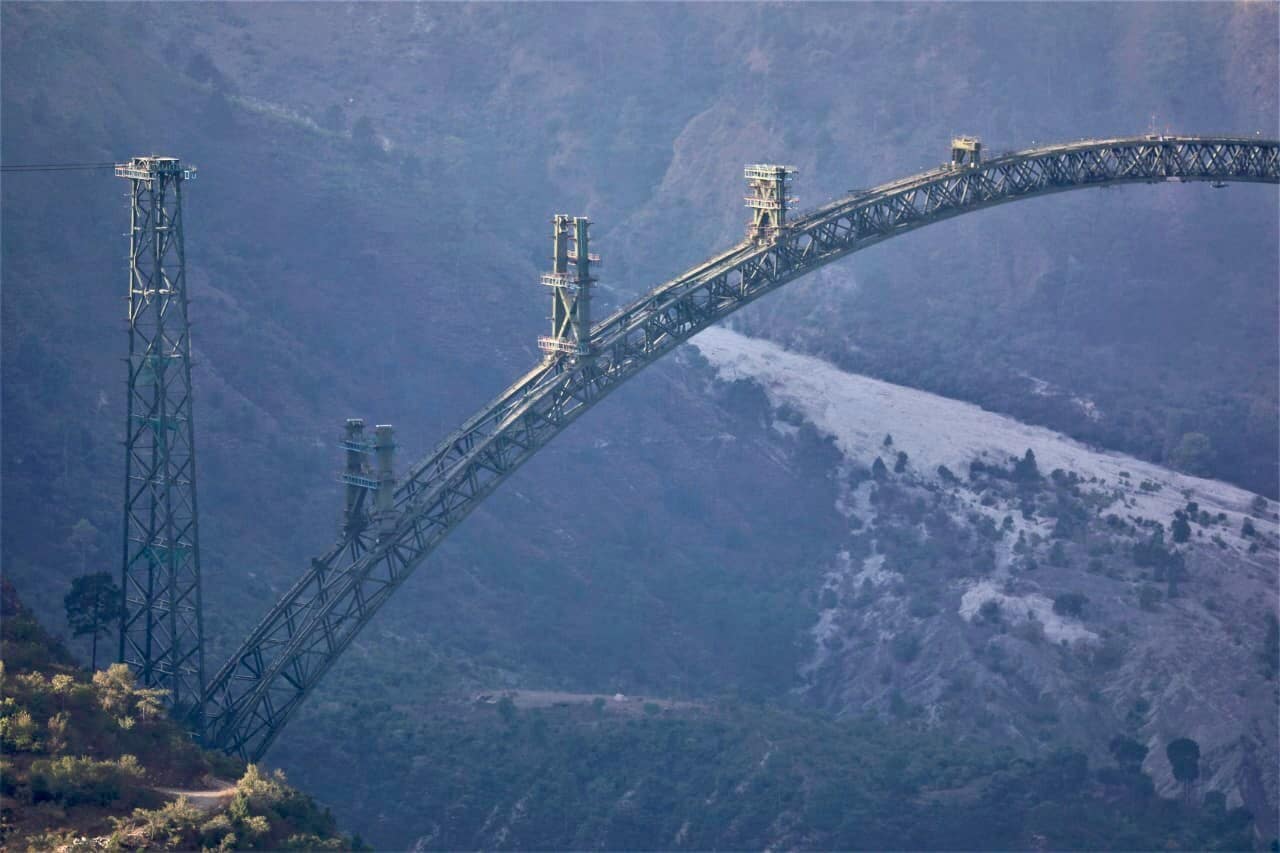NEWSNOWNATION is thrilled to bring you an exclusive update on a monumental engineering achievement in India. The world’s highest railway bridge, spanning the Chenab River in Jammu & Kashmir, recently achieved a significant milestone with the successful completion of its first trial run. This incredible structure is a testament to engineering excellence and is a pivotal component of India’s ambitious infrastructure projects.
Location and Significance
The Chenab Bridge is located in the Reasi district of Jammu & Kashmir. This region is characterized by its rugged terrain and scenic beauty, which posed numerous challenges during the construction of the bridge. The Chenab Bridge is an integral part of the Udhampur-Srinagar-Baramulla Rail Link (USBRL) project, a critical infrastructure initiative aimed at enhancing connectivity in the region.
Engineering Marvel
The Chenab Bridge is not just a bridge; it is an engineering marvel. Standing at a height of 359 meters (1,178 feet) above the Chenab River, it surpasses the height of the Eiffel Tower in Paris. The total length of the bridge is 1,315 meters (4,314 feet), making it the longest railway bridge in India. The bridge’s arch is the world’s longest-spanning arch railway bridge, a feat that showcases the prowess of modern engineering.

Construction Challenges
Building the Chenab Bridge was no small feat. The construction process faced several challenges, including the harsh terrain, unpredictable weather conditions, and the need for precision engineering. The bridge’s location in a seismic zone added to the complexity, requiring innovative design solutions to ensure stability and safety. Special high-strength steel was used to withstand the extreme forces of nature, and state-of-the-art technologies were employed to monitor the structure’s integrity.
Historical Context
The Udhampur-Srinagar-Baramulla Rail Link (USBRL) project, of which the Chenab Bridge is a part, has a long and storied history. Initiated in 2002, the project aims to provide seamless rail connectivity to the Kashmir Valley, a region known for its strategic importance and breathtaking landscapes. The USBRL project is divided into several phases, with the Chenab Bridge being a critical component of the Katra-Banihal section.
Economic and Strategic Importance
The successful completion of the Chenab Bridge trial run marks a significant milestone in the USBRL project. Once operational, this bridge will facilitate the movement of goods and passengers, thereby boosting the local economy and enhancing the region’s strategic connectivity. The bridge will also play a crucial role in integrating the Kashmir Valley with the rest of India, promoting tourism and economic development.
Design and Construction Techniques
The Chenab Bridge’s design incorporates several innovative techniques to address the challenges posed by its location and height. The bridge is designed to withstand wind speeds of up to 266 km/h and seismic activities of Zone V, the highest level of seismicity in India. The arch of the bridge was constructed using the incremental launching method, a technique that allowed for the safe and precise placement of the arch segments.
Material Selection
High-strength steel, capable of withstanding temperatures as low as -20 degrees Celsius, was used in the construction of the Chenab Bridge. The steel’s durability ensures the bridge’s longevity and resilience against environmental stressors. Additionally, extensive use of corrosion-resistant materials further enhances the bridge’s durability.

Environmental and Social Impact
The construction of the Chenab Bridge had a significant environmental and social impact on the region. Measures were taken to minimize the environmental footprint of the construction activities, including the implementation of sustainable practices and the use of environmentally friendly materials. The project also provided employment opportunities to the local population, contributing to the socio-economic development of the region.
Tourism Potential
The Chenab Bridge is expected to become a major tourist attraction, drawing visitors from across the country and beyond. The bridge’s breathtaking height and stunning views of the surrounding landscape make it a must-visit destination. The enhanced connectivity provided by the USBRL project will make it easier for tourists to explore the natural beauty and cultural heritage of Jammu & Kashmir.
Future Prospects
The successful trial run of the Chenab Bridge is just the beginning. The bridge is set to become fully operational in the near future, further enhancing the connectivity and economic prospects of the region. The USBRL project, with its series of tunnels, bridges, and railway stations, represents a monumental step forward in the development of India’s railway infrastructure.
Enhancing Regional Connectivity
The Chenab Bridge and the USBRL project will significantly reduce travel time between Jammu and Srinagar, making it easier for people to commute and conduct business. The improved connectivity will also facilitate the transport of goods, reducing logistical costs and boosting trade in the region.
Conclusion
The successful trial run of the world’s highest railway bridge over the Chenab River is a remarkable achievement that underscores India’s engineering capabilities and commitment to infrastructure development. The Chenab Bridge is poised to become a symbol of progress and a catalyst for economic growth in Jammu & Kashmir. As the bridge transitions from a construction marvel to an operational artery of the USBRL project, its impact on the region’s connectivity, economy, and tourism will be profound.
Stay tuned with NEWSNOWNATION for more updates on this and other significant infrastructure developments. Follow us on our social media channels and subscribe to our newsletter to stay informed about the latest news and stories that matter to you.
Follow us on social media for real-time news updates:







